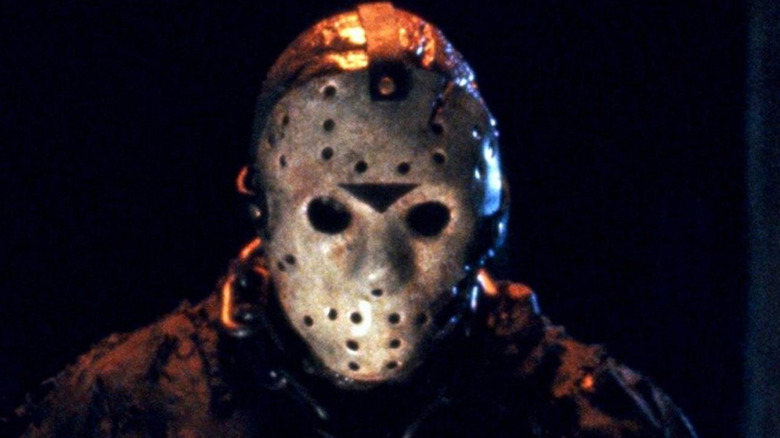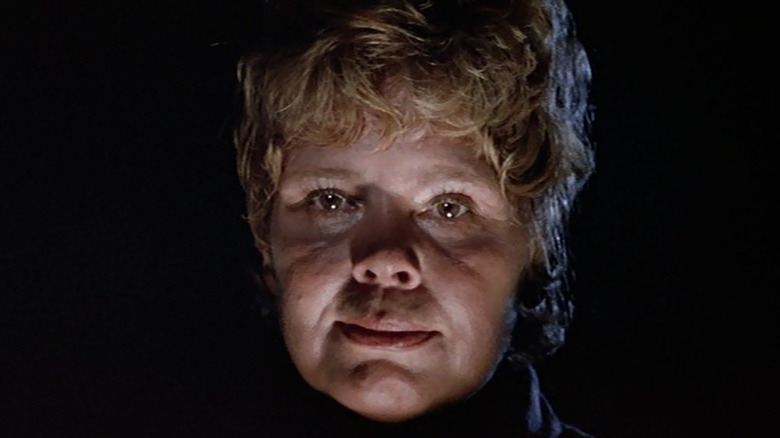This Is How The Famous Sound Effect From Friday The 13th Was Created
In the long, bloody history of the slasher genre, dozens of movies have earned the label "game-changer." However, few changed the slasher game quite as much as 1980's "Friday the 13th." Set almost entirely within the confines of an isolated summer camp with a gruesome history, the slasher classic followed a group of teen counselors getting ready to reopen the doomed Camp Crystal Lake for a season of fun in the sun. That prospect is, of course, promptly and violently cut down when those counselors start getting murdered in shocking fashion.
Upon release, "Friday the 13th" earned itself quite a reputation for its depiction of those violent kills, birthing an unexpected franchise with a rabid base of fans who continue to devour the films shamelessly gore-forward sensibilities. Likewise, they were just as enthralled by a twist-ending for the ages that proved far more unsettling than any horrific act of violence that preceded it. And while the film still essentially birthed a slasher icon in Jason Voorhees (even if he wasn't the main foe of the original film), that twist slyly undercuts his status as a vengeful, non-stop killing machine who's not to be trifled with.
Along with bringing the concept of Jason to life, "Friday the 13th" also conjured one of his most enduring trademarks — that infamous "ch ch ch, ah ah ah" sound effect that typically heralds his bloody arrival. The origin of that sound effect might surprise even die-hard fans of "Friday the 13th." Here's how it came to be.
That chilling sound effect was inspired by the real killer in Friday the 13th
That chilling effect was created by Henry Manfredini, who also composed the film's legendary original score. And while the horror-loving masses have been pronouncing the sound as "ch ch ch, ah ah ah" pretty much since "Friday the 13th" opened in 1980, Manfredini insists that's not actually the sound he recorded.
In a revelatory 2015 interview with Gun Media, the composer explained he conjured the sound for the purpose of giving a presence to the film's real killer, Pamela Voorhees (Betsy Palmer) — the mother of her more infamous son, Jason — who isn't seen until late in the bloody action. And the inspiration he found was in the way that the film's true killer is revealed: in particular, Manfredini claims that the jarring moment she switches her voice from her own to emulating her dead son's, stating "Kill her Mommy. Kill her," was the one which inspired his iconic sound effect.
Per Manfredini, he simply shortened the phrasing to "ki" and "ma," recording the sounds in his own voice (with the help of a vocal manipulator) as "ki ki ki, ma ma ma," and dropped them into the film's original score whenever the point of view changed to that of the killer. It's an absolutely genius bit of sound work from Manfredini, and one that's become every bit as iconic as Jason's infamous hockey mask in the years since "Friday the 13th" was released ... if only because that mask didn't actually appear until the third film in the franchise.

